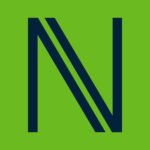Yesterday I attended a webinar organized by Cerner which dealt with trends. Usually, I don’t join, but I was interested to hear how COVID-19 affected the healthcare information technology industry. I’ll start from the end – I was very impressed.
One of the points the lecturer Tanuj K. Gupta, VP Intelligence, repeated quite a bit, was that Cerner is planning to integrate as many machine learning tools as possible to automate processes, due to the understanding that success lies in operational efficiency.
Greater Interoperability for Health Records
Policymakers looking to improve the flow of health information. This claim is very true because today in operating rooms – the most profitable unit in the hospital – partial information is collected. Which of course affects the hospital’s ability to make accurate financial assessments and forecasts.
Looking for companies and technologies to manage the burden of FDA regulations
As a requirement, any medical organization when suspicion arises is obliged to provide critical information involving the medical device, brand information – product code, model number, serial number, serial number, expiration date, Manufacturer’s name and address.
In fact, without the consolidation of clinical and logistic information and high levels of documentation, hospitals are unable to provide the above information.
Shift EHR data-entry away from care teams
Although Tanuj Gupta gave an example concerning clinics, I want to take it rather to streamline the work of the nurses. To date, none of the existing technologies has been able to document 100% of the information with 0% demand from the medical team.
Scanning items using barcodes, the common method in operating rooms, is problematic for many hospitals’ reporting processes: coding errors, out-of-date barcodes, and missing information for insurance claims. All of these issues are the result of inappropriate documentation methods.
Machine learning tools are here
We concluded that the barcode era is over, so we turned to photographic imaging — and started snapping instead. Using an image recognition technology, paired with a proprietary identification algorithm engine, we developed Snap & Go: a powerful device that within seconds, captures, identifies and routes the snapped item’s information through a global database into the hospital EHR and ERP systems. Snap & Go completely relieves the medical team from mundane data entry tasks. All they need to do is to place the consumed item under the camera and “SNAP,” it’s done — easy and simple!



